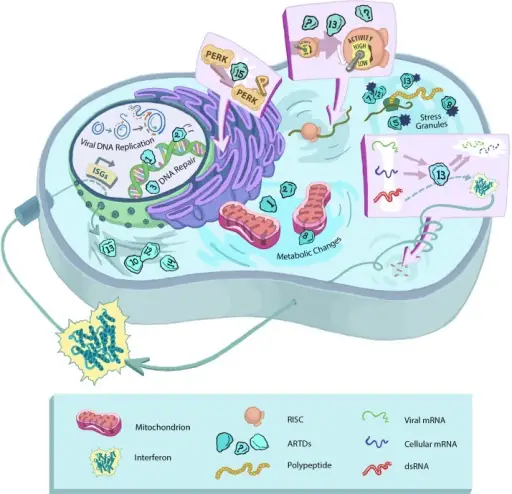
ARTDs/PARPs regulate cellular processes that viruses manipulate.ARTDs are involved in the regulation of multiple cellular stress responses. Virus infection is inherently stressful for the cell and often induces cellular stress responses in the course of replication. Stress-related pathways that are known to overlap between virus infection and ARTD activity are highlighted above. We have emphasized ARTD15’s role in PERK activation [10] and ARTD13’s ability to regulate RNA transcripts through direct (facilitating degradation of RNA [11,12]) and indirect (contributing to RISC inactivation [9]) mechanisms, while contributing to interferon production in response to molecular signatures of viral RNA [9,13]. We also indicate that multiple members of the ARTD family are interferon-stimulated genes (ISGs) [14,15], localize to stress granules [8], and contribute to DNA repair and overall metabolic changes in the cell [2,6,7]. Virus-Host Interactions and the ARTD/PARP Family of Enzymes. Kuny CV, Sullivan CS - PLoS pathogens (2016). Not Altered. CC.
The cellular responses to stress include the following:
- Hyperplasia
- Hypertrophy
- Atrophy
- Metaplasia
- Dysplasia
- Aplasia
- Hypoplasia
